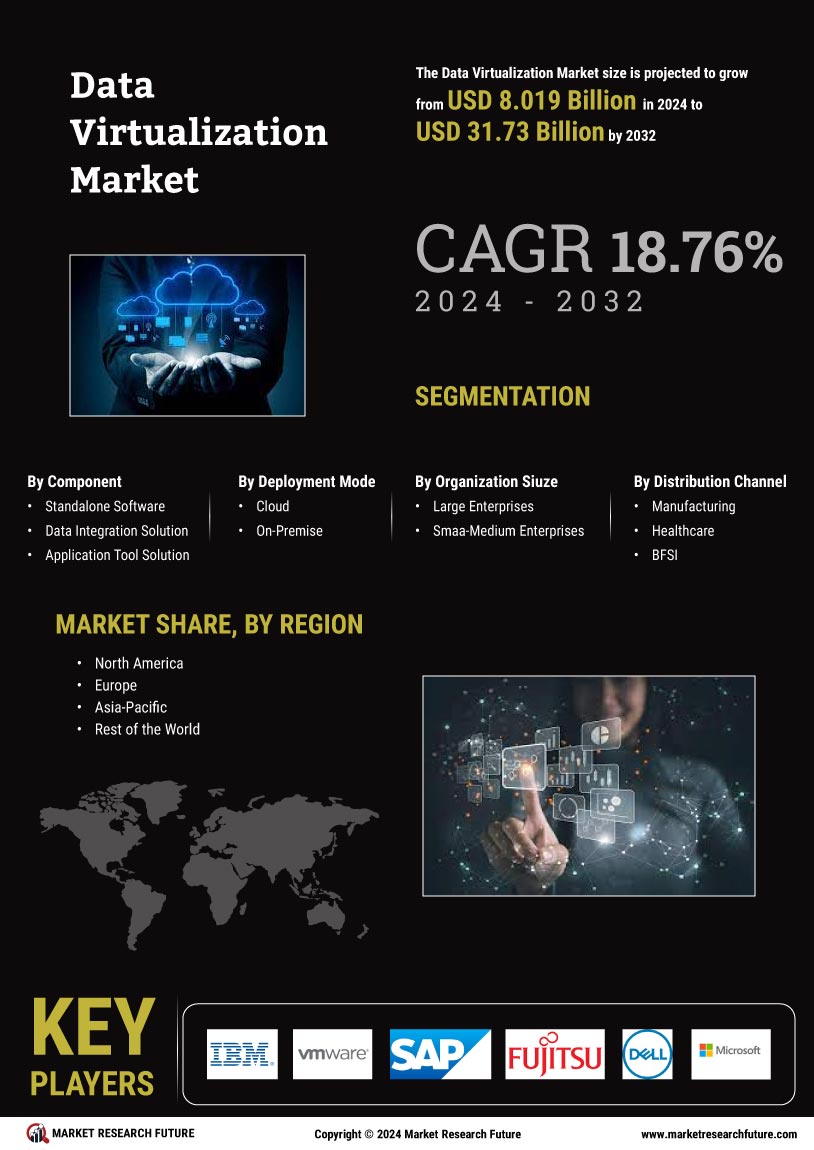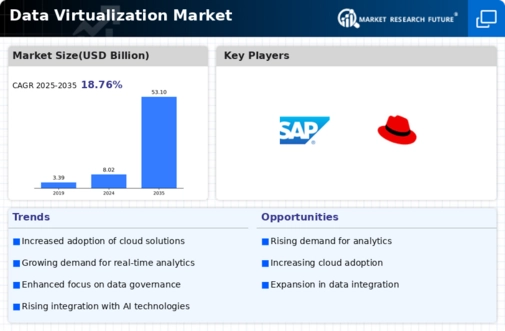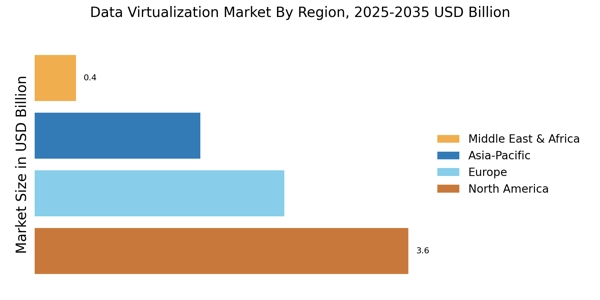Rising Need for Cost Efficiency
Cost efficiency is becoming an increasingly important consideration for organizations, driving growth in the Data Virtualization Market. As businesses strive to optimize their operational expenditures, data virtualization solutions offer a compelling value proposition. By enabling organizations to access and analyze data without the need for extensive data replication, these solutions can significantly reduce storage and maintenance costs. Market analyses indicate that organizations adopting data virtualization can achieve cost savings of up to 30% compared to traditional data management approaches. This financial incentive is likely to encourage more organizations to explore data virtualization as a viable solution for their data management challenges. As the emphasis on cost efficiency continues to rise, the Data Virtualization Market is expected to benefit from increased adoption rates and investment.
Emergence of Hybrid Data Environments
The emergence of hybrid data environments is reshaping the Data Virtualization Market. Organizations are increasingly adopting hybrid models that combine on-premises and cloud-based data solutions. This trend is driven by the need for flexibility and scalability in data management. As businesses seek to leverage the benefits of both environments, data virtualization plays a crucial role in integrating disparate data sources seamlessly. Recent studies indicate that the hybrid cloud market is projected to grow at a rate of approximately 20% annually, underscoring the demand for solutions that facilitate hybrid data management. By enabling organizations to unify their data landscape, data virtualization solutions are positioned to become essential components of hybrid data strategies. This shift towards hybrid environments is likely to continue influencing the Data Virtualization Market in the coming years.
Growing Importance of Data Governance
Data governance has emerged as a critical driver within the Data Virtualization Market. Organizations are increasingly prioritizing the establishment of robust data governance frameworks to ensure data quality, compliance, and security. This trend is particularly relevant as regulatory requirements become more stringent across various sectors. The market for data governance solutions is expected to expand significantly, with projections indicating a growth rate of around 15% annually. This growth reflects the recognition that effective data governance is essential for maximizing the value derived from data virtualization initiatives. By implementing comprehensive governance strategies, organizations can mitigate risks associated with data breaches and ensure that data remains a trusted asset. Consequently, the focus on data governance is likely to play a pivotal role in shaping the future landscape of the Data Virtualization Market.
Increased Demand for Data Accessibility
The Data Virtualization Market experiences a notable surge in demand for enhanced data accessibility. Organizations are increasingly recognizing the necessity of real-time access to data across various platforms. This trend is driven by the need for timely decision-making and improved operational efficiency. According to recent estimates, the data accessibility segment is projected to grow at a compound annual growth rate of approximately 20% over the next five years. This growth is indicative of a broader shift towards data democratization, where stakeholders at all levels require seamless access to data. As a result, data virtualization solutions are being adopted to facilitate this accessibility, allowing businesses to leverage their data assets more effectively. The emphasis on data accessibility is likely to continue shaping the Data Virtualization Market in the foreseeable future.
Advancements in Technology and Infrastructure
Technological advancements are a key driver propelling the Data Virtualization Market forward. Innovations in cloud computing, artificial intelligence, and machine learning are transforming how organizations manage and utilize their data. The integration of these technologies enables more efficient data processing and analysis, thereby enhancing the capabilities of data virtualization solutions. Recent reports suggest that the market for cloud-based data virtualization is expected to witness a growth rate of approximately 25% over the next few years. This growth is indicative of the increasing reliance on advanced technologies to streamline data management processes. As organizations seek to harness the power of their data, the role of technology in the Data Virtualization Market will likely become even more pronounced, driving further adoption and innovation.


















Leave a Comment